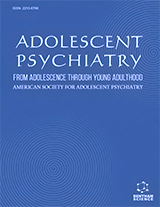Abstract
Background: The fifth edition of the Diagnostic and Statistical Manual of Mental Disorders (DSM), the DSM- 5, was approved by the Board of Trustees of the American Psychiatric Association (APA) on December 1, 2012, and released on May 18, 2013. The DSM-5 is the first major edition of the manual in nearly twenty years. Although designed for use in the United States, the DSM diagnostic system is widely used around the world.
Objectives: To summarize the changes to the overall structure and conceptualization of the DSM-5.
Methods: The author reports on information disseminated at training sessions for psychiatrists representing their District Branches held at the APA’s 2013 Annual Meeting. This is the first in a series of articles that will describe and explain the changes introduced into the DSM-5. This article focuses on the “metastructure” of the DSM-5.
Conclusions: The DSM-5 differs in many fundamental ways from previous versions of the manual, and reflects an ongoing attempt to bring psychiatry into the mainstream of medicine as well as to adapt to anticipated continuing rapid changes within the field.
Keywords: DSM-5; American psychiatric association, diagnostic and statistical manual, psychiatric disorders, diagnosis, classification.
Adolescent Psychiatry
Title:In Transitional Space: A Whirlwind Tour of the DSM-5
Volume: 3 Issue: 4
Author(s): Carlene MacMillan
Affiliation:
Keywords: DSM-5; American psychiatric association, diagnostic and statistical manual, psychiatric disorders, diagnosis, classification.
Abstract: Background: The fifth edition of the Diagnostic and Statistical Manual of Mental Disorders (DSM), the DSM- 5, was approved by the Board of Trustees of the American Psychiatric Association (APA) on December 1, 2012, and released on May 18, 2013. The DSM-5 is the first major edition of the manual in nearly twenty years. Although designed for use in the United States, the DSM diagnostic system is widely used around the world.
Objectives: To summarize the changes to the overall structure and conceptualization of the DSM-5.
Methods: The author reports on information disseminated at training sessions for psychiatrists representing their District Branches held at the APA’s 2013 Annual Meeting. This is the first in a series of articles that will describe and explain the changes introduced into the DSM-5. This article focuses on the “metastructure” of the DSM-5.
Conclusions: The DSM-5 differs in many fundamental ways from previous versions of the manual, and reflects an ongoing attempt to bring psychiatry into the mainstream of medicine as well as to adapt to anticipated continuing rapid changes within the field.
Export Options
About this article
Cite this article as:
MacMillan Carlene, In Transitional Space: A Whirlwind Tour of the DSM-5, Adolescent Psychiatry 2013; 3 (4) . https://dx.doi.org/10.2174/221067660304140121172925
| DOI https://dx.doi.org/10.2174/221067660304140121172925 |
Print ISSN 2210-6766 |
| Publisher Name Bentham Science Publisher |
Online ISSN 2210-6774 |
 36
36
- Author Guidelines
- Bentham Author Support Services (BASS)
- Graphical Abstracts
- Fabricating and Stating False Information
- Research Misconduct
- Post Publication Discussions and Corrections
- Publishing Ethics and Rectitude
- Increase Visibility of Your Article
- Archiving Policies
- Peer Review Workflow
- Order Your Article Before Print
- Promote Your Article
- Manuscript Transfer Facility
- Editorial Policies
- Allegations from Whistleblowers
- Announcements
Related Articles
-
Development of PET Probes for Cancer Imaging
Current Topics in Medicinal Chemistry Dimerization of C-terminal Truncations of α-synuclein and its Effect on the Aggregation Propensity: A Potential of Mean Force Study
Current Chemical Biology From the Table to the Bedside: Can Food-Derived Sulforaphane be used as a Novel Agent to Treat Leukemia?
Current Cancer Drug Targets Methods for Mining Single Nucleotide Polymorphism Data of Complex Diseases
Current Bioinformatics Genetic Predisposition in NAFLD and NASH: Impact on Severity of Liver Disease and Response to Treatment
Current Pharmaceutical Design Imatinib (STI571) Resistance in Chronic Myelogenous Leukemia: Molecular Basis of the Underlying Mechanisms and Potential Strategies for Treatment
Mini-Reviews in Medicinal Chemistry MCP-1/CCL2 as a Therapeutic Target in Myocardial Infarction and Ischemic Cardiomyopathy
Inflammation & Allergy - Drug Targets (Discontinued) Aiming at New Targets for the Treatment of Affective Disorders: An Introduction
Current Drug Targets New Insight into P-Glycoprotein as a Drug Target
Anti-Cancer Agents in Medicinal Chemistry The Endocannabinoid System and Multiple Sclerosis
Current Pharmaceutical Design Mechanisms of Adipocytokine-Mediated Trastuzumab Resistance in HER2-Positive Breast Cancer Cell Lines
Current Pharmacogenomics and Personalized Medicine Abnormal Bodily Experiences May be a Marker of Early Schizophrenia?
Current Pharmaceutical Design Identification of a Pathogenic PSEN1 Ala285Val Mutation Associated with Early-Onset Alzheimer’s Disease
Current Alzheimer Research Molecular Dynamics in Esophageal Adenocarcinoma: Who’s in Control?
Current Cancer Drug Targets Diagnostic and Therapeutic Uses of Nanomaterials in the Brain
Current Medicinal Chemistry Wnt Signalling is a Relevant Pathway Contributing to Amyloid Beta-Peptide-Mediated Neuropathology in Alzheimers Disease
CNS & Neurological Disorders - Drug Targets Poly(ADP)-Ribose Polymerase-1 Inhibitors as a Potential Treatment for Cocaine Addiction
CNS & Neurological Disorders - Drug Targets High Dose Zolpidem Induced Fetal Neural Tube Defects
Current Drug Safety Modulators of Inhibitor of Growth (ING) Family Expression in Development and Disease
Current Drug Targets Dietary Fiber Gap and Host Gut Microbiota
Protein & Peptide Letters


























